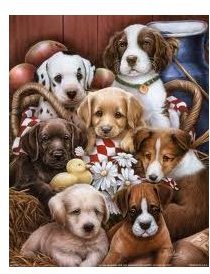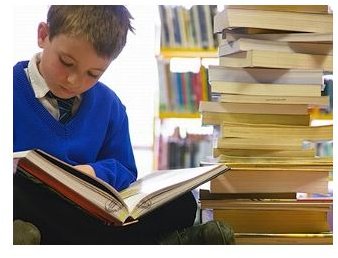Nonfiction Reading Webquest for Grades 2-4
It is important to be exposed to nonfiction reading at an early age, in order to prepare for the kinds of text that you will encounter later on. Most of the things you will need to read in real life are not in storybook form.
In this nonfiction reading webquest made for Grades 2 to 4 students, you will read one fiction and one nonfiction text that are on the same topic— dogs. You will learn to compare and contrast through the use of a venn diagram, to use a story map to understand a story better, to identify the main idea and supporting details in a text you have read, to determine cause-and-effect situations, and to write your very own nonfiction.
Introduction
Your beloved puppy was dog-napped by a group of alien dogs from another planet! As you were looking around for clues in your house, you found a mysterious bone-shaped gem. “What’s this?” you ask aloud, turning over the glittering gem in your land. Suddenly, you felt dizzy as if the world was turning round and round!!! Everything went black!
When you woke up, you found yourself surrounded by weird-looking dogs. “What are you doing here?” a huge dog said, stepping closer. He looked like the leader of the pack. You explain to them about your lost puppy and beg them to give him back.

Task
You were asked to complete several tasks before your puppy is to be released. Here are the tasks:
1. Read an interactive story about the famous dog Clifford. Just click on “Begin” and then click on the speaker symbols to listen to the lines of the story. Afterwards, read the nonfiction selection about dog training. Did you notice things that are the same? Which are different?
2. Study a venn diagram sample. Then compare and contrast the fiction story and the nonfiction selection about dogs that you had read by writing the similarities and the differences in a venn diagram. Make one on a piece of bond paper. You may add drawings too!
3. For the story about Clifford, fill out a unique bone story map to recall the details in the story.
4. Also learn to identify the main idea or the big idea in a selection. Then point out the details that support the main idea. Use this main idea and supporting details organizer to understand the nonfiction text about training dogs and giving them obedience lessons.
5. Now try to look for some cause-and-effect situations in the nonfiction selection. For example, if the effect is that the dog obeys its master, then what was the cause of this? Use a cause-and-effect organizer.
6. Finally,write your own nonfiction selection. You may write about your own pet dog or you may describe the kind of pet that you would want to have. These are real, and not made up. Nonfiction texts are full of facts, not invented details such as in fiction. Include a drawing too if you wish!
Conclusion
The leader of the alien dogs closely examined your work, his face a picture of concentration. “Very well done!” he suddenly exclaimed. He then explained the importance of learning about nonfiction reading. It helps you become ready for higher grade levels where there are more textbooks to be read and studied. It also prepares you to handle real-life selections that you will encounter, such as news and product brochures.
You smile widely as your puppy leaps into your arms and licks your face in joy! “Thank you!” you tell the alien dogs. And in a puff of smoke, you are suddenly back in your house with your beloved puppy.
